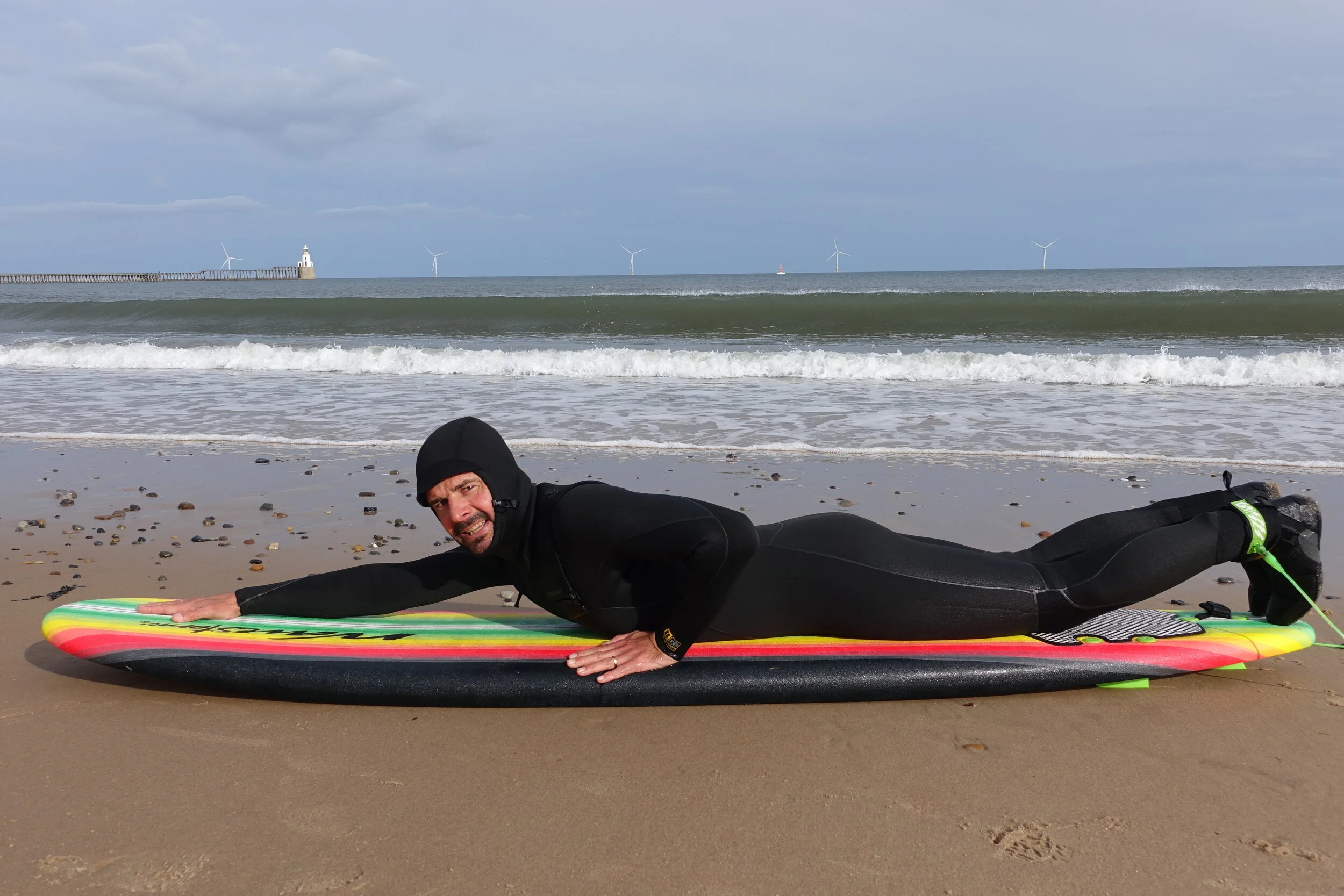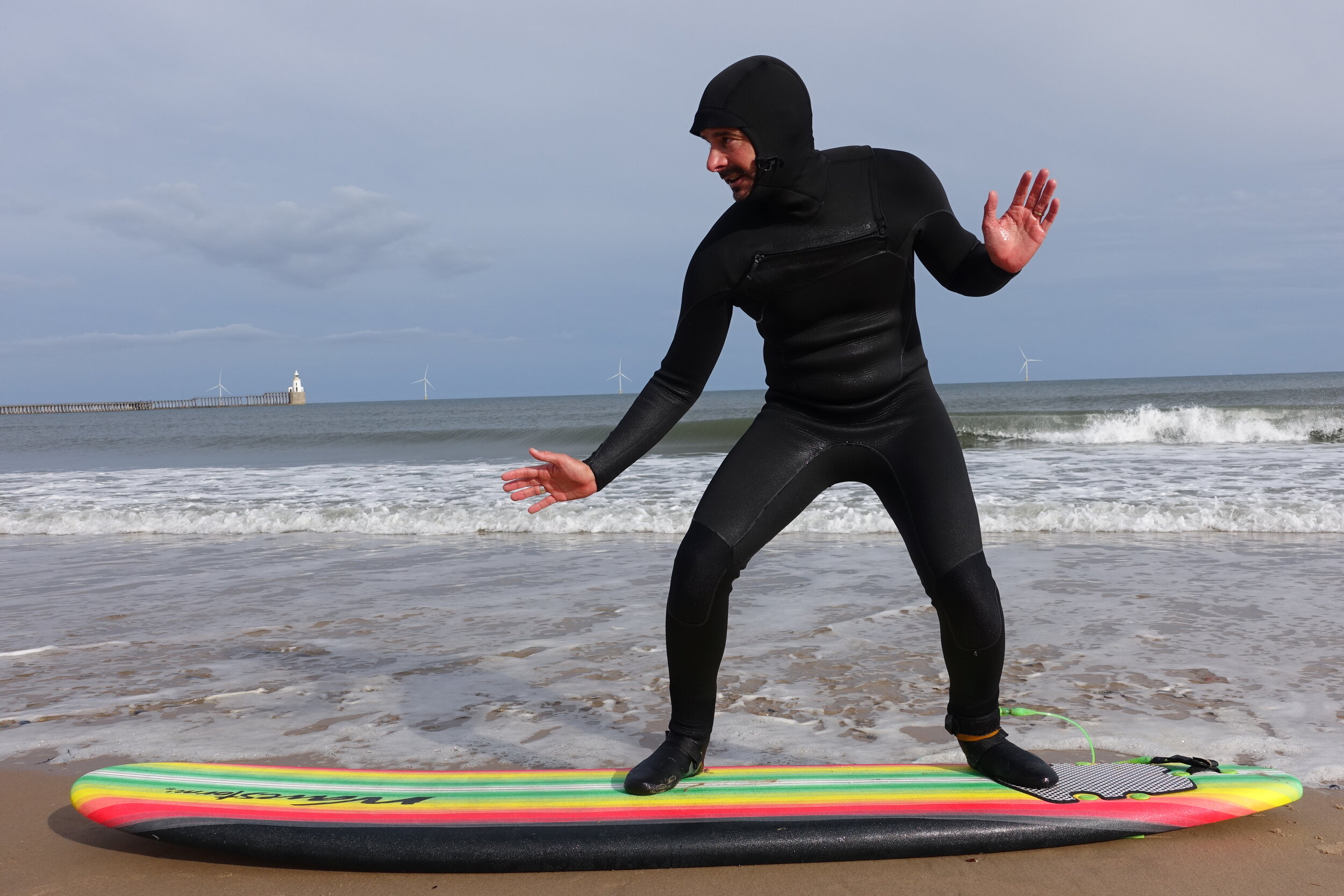How to Surf
All image credit: Lauren Davies
Pick your beach, pick your day
Check local conditions and for any warning signs, quiz lifeguards and talk to locals. Don’t be afraid of asking questions or advice. Check wave forecasts and for any local hazards. Surf with a buddy! You will want to start on small waves or in the white water on bigger days.
Gear
Wetsuits: essential for staying in the water longer! You need it to be snug fitting, with boots and gloves for cooler water. Wetsuits sourced from Yulex natural rubber reduces Co2 by ~80% compared with traditional neoprene suits. They can also be Fair Trade Certified. Wetsuits do not have an end of life circular footprint and are very difficult to recycle. You will likely need a winter and summer suit depending on where you surf, so pick wisely!
Surfboard: getting the board right is going to be a make or break your learning curve, begin with a high volume foam board around 8ft+. Your leash needs to be in good condition and attached around your rear ankle, cord pointing out from your feet, to avoid getting tangled. The leash is there for your safety, so always try to keep connected to your board and in control of your board. Don’t let your board fly away and hit someone nearby. Fresh wax goes on the deck to give you grip. Check fins are screwed in firmly. All checked and all good, then go get ’em!
Positioning
Lie feet together, on or over the tail, at least an arms length from the nose. Head and chest raised up from the deck of your board. You want to walk out in the sea as far as you can, then depending on conditions you will want to catch easier white water (broken waves) or paddle further out and paddle into the green (unbroken waves). If waves are as small as during this session you can paddle out beyond the white water wave zone, sit or stand and wait for your green wave. You want a smooth-looking wave, with nobody else riding it.
Paddle
When you see a wave that has no one on, you paddle hard to match the board with the speed of the wave. When you feel the push of the wave taking over, give one or two extra paddle strokes and get your hands under your chest on the deck of the board, just overlapping the rails. If your positioning is too far forward, you risk going over the handlebars if the wave is steep. That’s a nose dive, which you’ll quickly want to avoid!
Pop up
OK, this is where the fun begins! The wave is firing you along now and from that ‘prone’ paddle position, you need to get your front foot up and planted under your chest. Easy, yeah! The hand placement is super important, you need hands under your chest for the strongest push up position possible. Your front foot has to land directly right there between your hands. The back foot drags up and lands behind you. Practise in a burpee-style move on dry land loads of times, so something very unnatural becomes more natural. Once both feet are centred down the middle of the board, you can slowly release your hands and raise up in your strong and solid stance. Adjust if you need to, so you are balanced and strong. Eyes and head forward, shoulders directly over your feet, not twisted and facing forward – you are snowboarding, not skiing along the wave. You can do this step by step using your knees, but taking the time to nail this, even if it is a longer learning curve than using your knee, is essential in my eyes. Jumping smoothly in one motion from prone to your surfing stance is the best and most timeless technique you need to learn.
Stance
If you are right foot forward you are a goofy foot, if you are left foot leading you are a natural foot or regular foot. No difference really, just make sure your rear foot has the leash on it, and you lead with the foot that is most natural for you. Both feet need to be centred down the middle of the board, so adjust if you need to. Eyes and head forward, shoulders over your feet, not facing forward. Once you are up and riding, keep your eyes in the direction you want to go. As you progress adjust your weight onto your toes, your heels or angle the take-off if you want to start turning down the line of the wave. Traversing along the wave and not just straight lining the wave to shore, is where you will really start flying. Remember anyone from age 5-95 (or older!) can go out there to ride and enjoy the waves. Remember to take 2 minutes to clean the beach on your way back home!
Gabe Davies
@gabedavies





